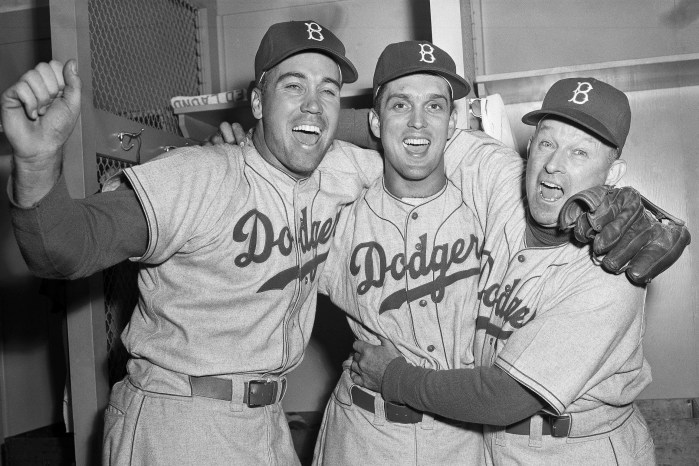
New York City’s Museum of Jewish Heritage bills itself as “the primary resource in the tri-state area for teaching and learning about the Holocaust.”
Some 60,000 schoolchildren visit every year, according to the museum. On a recent morning, schoolbuses lined the sidewalk, kids joking around and shoving each other next to the display of the kind of freight wagon used to deport Jews to extermination camps in Poland.
That’s for part of the museum’s new exhibit “Auschwitz. Not long ago. Not far away,” which is a pretty chilling title given that two synagogues in the United States were shot up over the last year.
The educational purpose of the exhibit is not just for students, and there’s plenty of material beyond the childrens’ shoes and jackboots that will surprise and disturb.
Take the collection of 1944 photographs of Nazi officers singing joyfully at Solahutte, a weekend country retreat. One uniformed man plays the accordion, others smile and sing. This is all a bus ride away from Auschwitz and its activities.
A caption notes that the image “contradicts an old German saying: Fear not, but rest where tearful songs ring; for wicked men have no sweet songs to sing.”
Pictures of the camp commandants’ kids playing in a pool and gardening underscore the point that people find ways to put nearby terrible acts out of their heads.
Then there’s the section devoted to the MS St. Louis, a vessel filled with Jewish passengers escaping Germany in 1939 that was turned away from destinations in Cuba and the United States. Hundreds ended up dying after the ship returned to Europe, many in Auschwitz.
It’s a stark couple of panels when you consider that the Statue of Liberty is visible out some of the museum’s harbor-side windows, and that the current U.S. administration has sought to limit refugees.
One rhetorical and educational choice that the viewer might notice is how often the museum uses the word “murder.” As in: “Ludwig and Irma Bauer, ages fifty-nine and forty-eight, were murdered upon their arrival in Auschwitz.” Or: “Of the 1.1 million Jews deported to Auschwitz, only 200,000 were admitted as registered prisoners into the camp; the other 900,000 were murdered shortly after their arrival.”
Dr. Robert Jan van Pelt, chief curator of the exhibit, says this was a conscious decision: “Yes, it is correct that we consciously used the verb to murder in order to describe the nature of killing in Auschwitz. Soldiers kill other soldiers in battle, and that is not a crime. Murder is a crime which is well understood: someone kills someone else intentionally, and the killer normally surprises the victim, and the victim has no or only little opportunity to defend him/herself.”
Van Pelt acknowledged that murder is usually associated with a single victim. Perhaps like one you read about in the paper, or see on television news, which grips you and horrifies you, happening just down the block or near your favorite pizzeria. A scary thought, even that one homicide.
“We indeed believe that murder in Auschwitz does not have 1.1 million victims,” says van Pelt, “but one victim at a time, 1.1 million times repeated.”

















